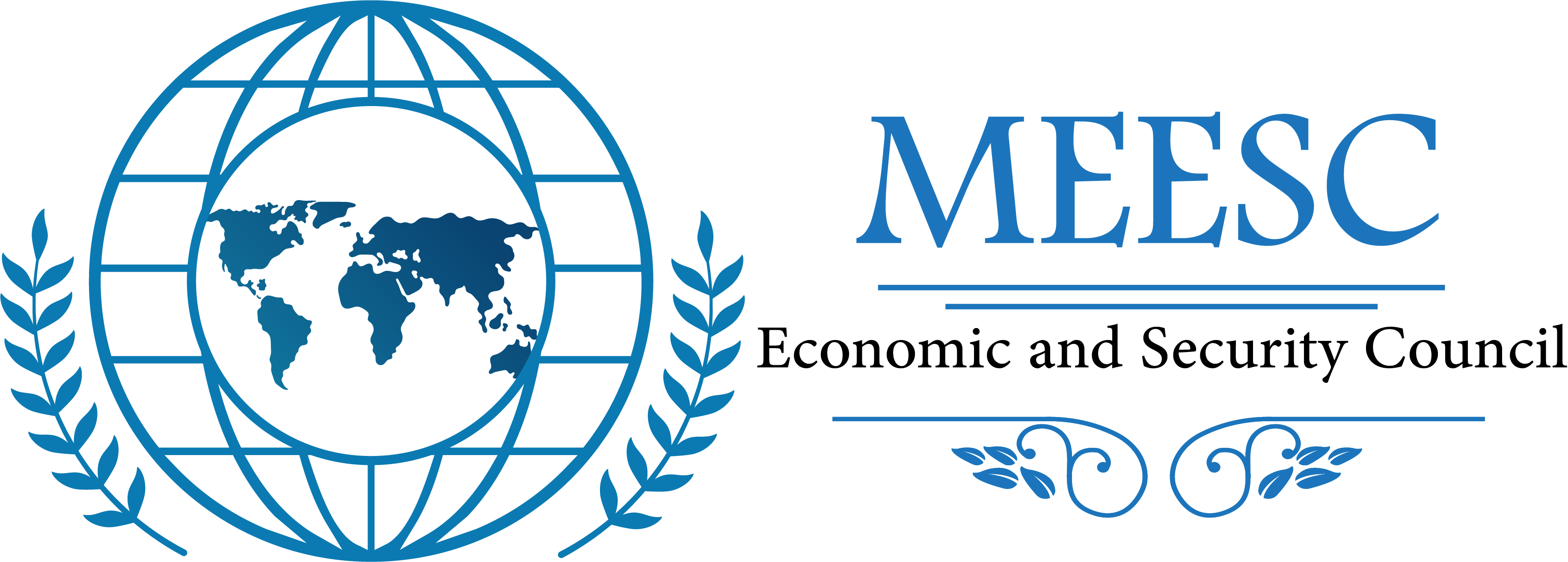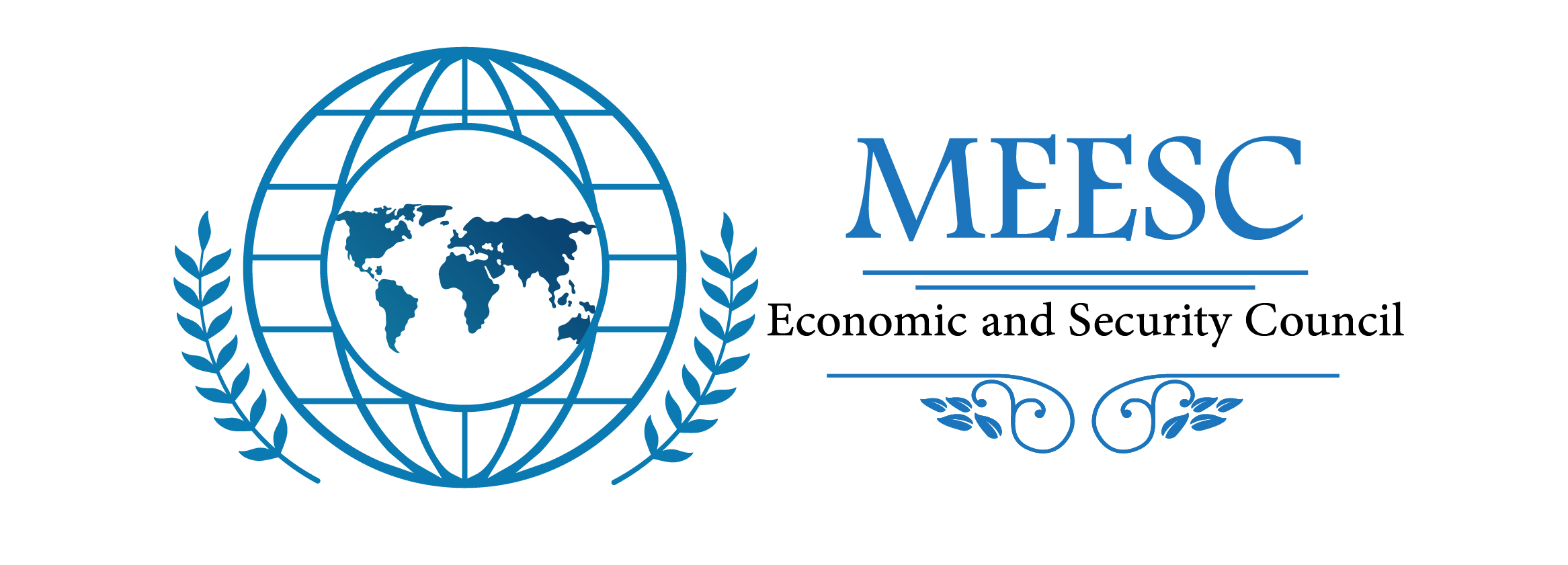
Could (MEESC) face future, through enter action inspire collaboration today ?
Established and led by its visionary founder, the initiative is supported by a select group of interdisciplinary experts specializing in international relations, political strategy, and national security
Middle East Economic and Security Council could address future interactions by inspiring collaboration today through a strategic focus on shared challenges and opportunities. Here’s how it can act as a unifying platform for both immediate and long-term goals:
1. Tackling Shared Challenges
• Economic Recovery and Stability: By addressing pressing post-pandemic economic recovery and inflation concerns, the council can unify the region in strengthening supply chains, promoting investments, and diversifying economies.
• Security Coordination: With shared threats like terrorism, cybercrime, and regional instability, the council could provide a space for cooperation in intelligence sharing and defense strategies.
• Climate Change: Joint initiatives to combat water scarcity, desertification, and rising temperatures could bring countries together over common goals like renewable energy and food security.
2. Setting Foundations for Future Interactions
• Promoting Regional Integration: Establishing economic blocs or free-trade zones fosters trust, facilitates cross-border commerce, and creates pathways for sustained engagement.
• Shared Infrastructure Projects: Collaborative megaprojects like railways, digital connectivity, and green energy networks can bind countries economically and socially, laying the groundwork for lasting partnerships.
• People-to-People Engagement: Programs in education, cultural exchange, and tourism would build mutual understanding and create a culture of cooperation.
3. Inspiring Collaboration Today for Tomorrow’s World
• Encouraging Private Sector Leadership: Businesses operating across borders in areas like technology, energy, and manufacturing could lead the way in fostering economic unity.
• Youth and Innovation Initiatives: Investing in young leaders, entrepreneurs, and innovators ensures a modernized and forward-thinking regional future.
• Multilateral Governance Models: A council that emphasizes equity in decision-making ensures representation for all nations, avoiding dominance by larger powers.
Potential Pathways for Inspiration
• Green Energy Collaboration: Saudi Arabia and the UAE’s Middle East Green Initiative could be scaled across the region for collective impact.
• Maritime Security Agreements: Building on efforts like the Combined Maritime Forces can ensure security for vital shipping lanes, which benefits all regional economies.
By building trust and focusing on common benefits today, a Middle East Economic and Security Council could inspire collaboration that addresses both current issues and future challenges.
- I Would you like specific strategies for launching such an initiative.
Here are specific strategies for launching a Middle East Economic and Security Council (MEESC) that can foster collaboration today and address future challenges:
1. Build a Clear, Inclusive Framework
• Start with Foundational Agreements:
Begin with an economic charter that outlines shared goals such as free trade, investment promotion, and joint infrastructure projects. Include security agreements on counterterrorism, cyber threats, and conflict prevention.
• Inclusive Membership:
Avoid limiting: MEESC for all states in Middle East with Alliance global partners like the EU, and the U.S. as observers.
2. Focus on Quick Wins to Build Trust
• Joint Projects:
Launch visible and impactful projects such as renewable energy hubs (solar farms in deserts), desalination plants, or digital infrastructure like regional 5G networks.
• Trade Corridors:
Develop cross-border trade and transportation infrastructure, such as a pan-regional railway linking the GCC, Iraq, and Levant countries.
• Crisis Management Collaboration:
Implement a joint task force for rapid disaster responses, such as handling earthquakes, floods, or refugee crises.
3. Strengthen Economic Cooperation
• Establish a Middle East Development Bank:
Modeled after institutions like the Asian Development Bank, it could finance regional infrastructure, education, and innovation projects.
• Economic Zones and Hubs:
Create special economic zones that connect nations, such as a free-trade corridor spanning the UAE, Saudi Arabia, and Egypt.
• Digital Economy Partnership:
Foster collaboration on tech innovation, startups, and fintech to ensure the region remains competitive in the global digital economy.
4. Advance Regional Security
• Intelligence-Sharing Platform:
Develop a unified intelligence-sharing system to address terrorism, organized crime, and cyber threats.
• Collaborative Military Exercises:
Conduct joint drills to enhance interoperability between regional forces and build trust between nations.
• Conflict Mediation Mechanisms:
Establish a neutral body within the council for mediating regional disputes and reducing tensions (e.g., between Iran and Saudi Arabia).
5. Promote Energy and Environmental Cooperation
• Renewable Energy Consortium:
Establish a coalition focused on solar, wind, and green hydrogen development, leveraging the region’s natural resources.
• Water Security Initiatives:
Collaborate on desalination technologies, water recycling, and equitable sharing of trans boundary water resources (e.g., Tigris and Euphrates rivers).
• Carbon Neutrality Goals:
Work together on carbon capture projects, reforestation, and transitioning to sustainable urban planning.
6. Foster Cultural and People-to-People Ties
• Education Exchange Programs:
Establish scholarship programs and regional research centers focusing on technology, diplomacy, and energy.
• Cultural Diplomacy:
Launch regional festivals or sporting events that celebrate shared heritage and promote unity (e.g., similar to the FIFA World Cup hosted in Qatar).
• Tourism Collaboration:
Create joint tourism packages promoting destinations across multiple countries, such as religious and cultural heritage sites.
7. Leverage Global Partnerships
• Engage with Global Powers:
Involve external players like the EU, U.S. as observers or financial partners, ensuring their support for regional stability and growth.
• Adopt Best Practices:
Learn from ASEAN, the EU, and the African Union to develop governance structures, shared decision-making processes, and conflict resolution models.
8. Prioritize Communication and Transparency
• Shared Media Platforms:
Develop a regional media channel to promote the council’s work, educate citizens, and dispel misconceptions.
• Annual Summit:
Host an annual MEESC summit to evaluate progress, announce new initiatives, and maintain momentum.
• Public Engagement:
Create opportunities for civil society organizations, businesses, and youth to contribute ideas and be part of the dialogue.
Timeline for Implementation
1. Year 1: Establish a preparatory committee to finalize the council’s charter, founding members, and priority projects.
2. Years 2-3: Launch initial projects (e.g., renewable energy hubs, trade zones) and conduct the first MEESC summit.
3. Years 4-5: Expand membership, deepen economic integration, and showcase successful collaboration projects to the world.
These strategies balance short-term trust-building with long-term integration, ensuring the council becomes a platform for regional cooperation and progress
- Here are specific project examples for launching and operationalizing the Middle East Economic and Security Council (MEESC) across key focus areas:
1. Economic Collaboration Projects
• Middle East Trade Corridor
• Description: Develop a trade and transport corridor connecting the GCC to Iraq, Jordan, and Egypt. This could include railroads, highways, and logistics hubs to facilitate faster trade.
• Impact: Reduces transportation costs, boosts intra-regional trade, and creates jobs.
• Example: The UAE’s Etihad Rail project could be extended to link Saudi Arabia, Jordan, and Iraq.
• Regional Digital Economy Zone
• Description: Create a free digital trade zone focused on e-commerce, fintech, and cloud computing, with streamlined regulations for tech startups.
• Impact: Positions the region as a hub for digital innovation and diversifies economies away from oil.
• Example: Dubai’s Internet City could be scaled regionally.
• Middle East Development Fund
• Description: A multilateral fund to finance infrastructure, SMEs, and green initiatives, modeled after the Asian Infrastructure Investment Bank (AIIB).
• Impact: Provides resources for underfunded nations while promoting collaborative growth.
2. Security Collaboration Projects
• Regional Cyber security Task Force
• Description: Create a joint task force to counter cyber threats, secure critical infrastructure, and exchange knowledge on cyber security defense.
• Impact: Protects financial institutions, energy grids, and governmental systems from attacks.
• Example: Builds on Saudi Arabia’s Global Cyber security Forum.
• Counterterrorism Intelligence Center
• Description: Establish an intelligence-sharing hub that monitors and disrupts terrorist networks, similar to Interpol’s coordination mechanisms.
• Impact: Improves regional safety and reduces cross-border extremist activities.
• Maritime Security Initiative
• Description: Enhance maritime security by deploying a joint naval fleet to protect key waterways like the Strait of Hormuz and the Red Sea.
• Impact: Safeguards shipping routes vital to global trade and oil exports.
3. Renewable Energy and Climate Projects
• Solar Belt Alliance
• Description: Develop a solar energy grid connecting Middle Eastern countries, enabling surplus energy to be shared across borders.
• Impact: Reduces dependency on oil, promotes sustainable energy, and provides a model for global green cooperation.
• Example: Build on Saudi Arabia’s NEOM city project and Morocco’s Noor solar plant.
• Regional Desalination Network
• Description: Implement interconnected desalination plants with shared pipelines to address water scarcity.
• Impact: Provides clean water access and reduces tensions over trans boundary water resources.
• Example: Expand on the Red Sea-Dead Sea Water Conveyance Project.
• Carbon Capture Coalition
• Description: Develop carbon capture and storage (CCS) projects in collaboration with global partners, focusing on reducing emissions from the oil and gas sectors.
• Impact: Helps the region meet global climate goals while preserving its energy economy.
4. Cultural and Educational Initiatives
• Middle East Innovation Academy
• Description: Create a regional academy focused on training youth in artificial intelligence, robotics, and diplomacy, with scholarships for students from all member states.
• Impact: Builds the region’s future workforce and fosters collaboration among young leaders.
• Example: Modeled after initiatives like the Rhodes Scholarship, adapted for the Middle East.
• Cultural Heritage Route
• Description: Develop a regional tourism project linking historical and cultural sites, such as Petra (Jordan), Al-Ula (Saudi Arabia), and Persepolis (Iran).
• Impact: Boosts tourism revenue and celebrates shared cultural heritage.
• Regional Sports League
• Description: Launch a Middle Eastern sports league or mega-event (e.g., a regional World Cup-style competition).
• Impact: Builds goodwill among citizens and strengthens people-to-people ties.
5. Conflict Resolution and Mediation Efforts
• Regional Mediation Center
• Description: Establish a neutral body within MEESC to mediate disputes (e.g., Saudi-Iran tensions or water disputes between Iraq and Turkey).
• Impact: Provides a structured process to resolve conflicts peacefully.
• Post-Conflict Reconstruction Fund
• Description: A fund to assist countries recovering from war (e.g., Syria, Yemen) by financing infrastructure rebuilding and humanitarian aid.
• Impact: Promotes stability and reduces the risk of conflict recurrence.
6. Governance and Communication Projects
• MEESC Transparency Portal
• Description: Develop an online platform where member states can report progress on projects, share updates, and engage citizens.
• Impact: Increases accountability and encourages public buy-in for initiatives.
• Annual MEESC Summit
• Description: Organize a yearly summit where leaders present achievements, announce new projects, and address regional challenges.
• Impact: Maintains momentum and strengthens diplomatic ties.
These projects could build immediate trust and inspire a sense of regional purpose while addressing long-term challenges.

